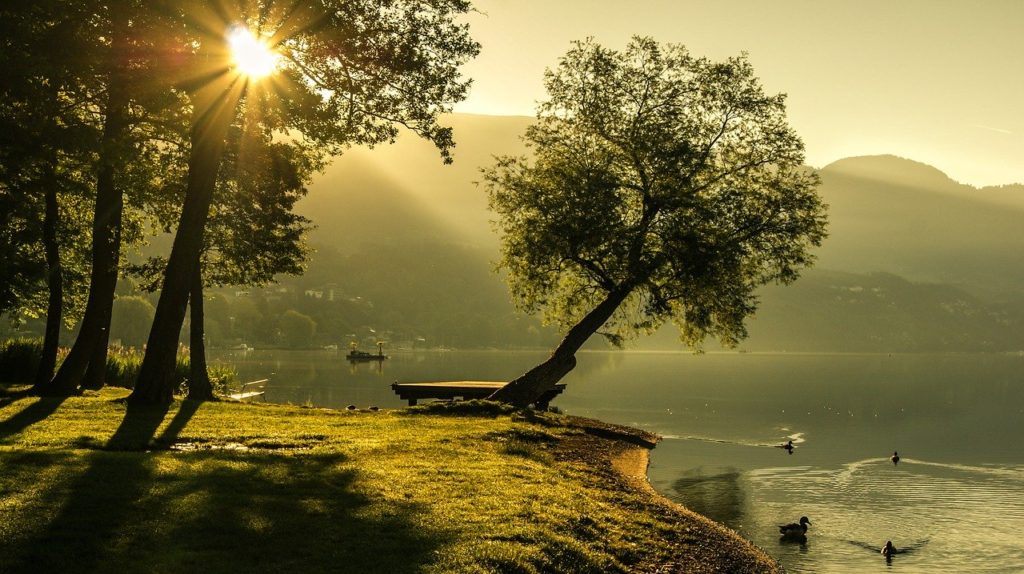Last Saturday afternoon was quite the afternoon, worshipping and praying at LifeBridge Church in Thamesville, Ontario. Pastor Mary Audrey Raycroft and a group from Catch the Fire, Toronto, along with many pastors and intercessors from South Western Ontario, have been gathering at this site, once a month, over the past year. The Lord strategically orchestrated our meetings at this particular site, as He has called us to take up a torch that was lit, through passionate prayer and intercession, over 200 years ago, in a small settlement of Moravians on the north shore of the Thames River, called Fairfield on the Thames.
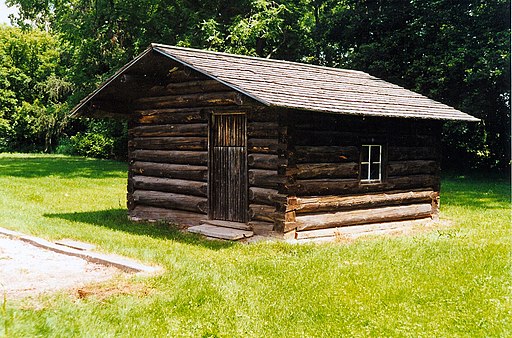
During the war of 1812, the British and First Nations people, led by Chief Tecumseh, were displaced by the Americans as they landed at Fort Malden in Amherstburg, Ontario and forced up the Thames River, almost reaching the Moravian settlement. On October 5, 1813, the final battle was fought and the British and first nations people, along with Chief Tecumseh were overcome. This final battle of the war, known as the Battle of the Thames, took place just one mile and a half below Fairfield where the Moravians lived.
As the fighting grew closer and closer to Fairfield, all but Jung and one other missionary family, fled the settlement, hiding in the forest. After the Battle of the Thames, American troops took over the village of Fairfield, but fortunately, Jung and the others who stayed at the settlement were released to leave with the things they owned. The Americans plundered all of the remaining possessions and as Jung and the others rode away in their wagon, leaving their home behind, the American troops set their houses ablaze. Upon seeing the smoke rise, Schnall, Jung’s missionary companion, said, “Even if the town is destroyed, the flames will not burn up the prayers which we have offered on behalf of the mission, in the church, the gardens, the fields and the woods, and the Lord will surely in his own good time re-establish his work here.”[1] The next day, the whole settlement of Fairfield was set on fire and completely destroyed.
After these harrowing events, most of the missionaries returned to Pennsylvania except for one family who remained to continue to care for the Delaware First Nations people. Two years after the war, this remaining group of Moravians returned to the old settlement of Fairfield for a time, living in temporary huts, but then moved to the south side of the Thames River, establishing a new settlement called, New Fairfield.
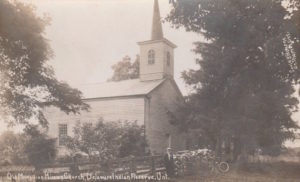
During the time of the settlement in Old Fairfield, between 1792 and 1813, the Moravians had quite an impact on the area. After mentioning that some of the whites in the surrounding area seemed to be trying to lead the Delaware people astray, the source article I found on the web reads,
“Nevertheless the Moravians had many friends, and the mission was the religious centre of the Thames for years. Nearly every Sunday white people came from the lower settlements to attend services in the chapel at Fairfield. Soon the missionaries were called upon to extend their work outside the town. Senseman was much occupied with marrying couples and baptizing children. Sometimes this was done at Fairfield, but more often in the settlements. Often he went down to preach, or to visit the sick, and rarely left without baptizing several children. He was so beloved that in 1796 the inhabitants of the river wanted to choose him as their representative to the assembly, but this he declined. For years, beginning in February, 1796, Michael Jung preached every alternate Sunday at the house of Francis Cornwall, seven miles away. Like Senseman, he frequently baptized children and conducted funerals. The demands on the missionaries were so great that they had to decline a request from a new settlement far up the river, that one of them should preach there.”[2]
The mission continued in New Fairfield into the 19th century, but merged with the Methodist Church in Canada, on April 1, 1903. Eventually New Fairfield became a reserve for the Delaware First Nations people. Today, this area is called Moraviantown.
So, as previously mentioned, once a month, a passionate group of Holy Spirit filled, lovers of God, gather to water the ancient root that was established in Fairfield all those years ago, by faithful, praying Moravians, and we partner with God in stirring up the work of the Spirit and the hearts of people, once again… Lighting and fanning into flame, the coals once hot and ablaze with passion for the Lord.
Having said all that… Last Saturday was epic and many whispers that I have received from the Lord over the last four years, came together; whispers about playing hide and seek and whispers about trees.
In the Summer of 2016, suddenly I felt the Lord become more silent than I was used to and I sensed the Spirit saying that the Lord was provoking me to seek Him out more, differently, in places I hadn’t sought Him before; to find joy in the seeking and finding, to more fully expect to find Him and to know that He really did want to be found by me. As I contemplated this and wrote a blog about it (link here), I sensed the Lord reminding me that when children play hide and seek outside, they very often hide behind trees… And through that, I hear the Lord say, look for me behind and amongst the trees; expect to find me there. If this doesn’t seem to mean much to you, continue reading; it will shortly.
On another occasion afterward, when spending time in prayer with the Lord, He simply spoke to my heart, you are a tree. As I contemplated that and chewed on it, I was reminded of Psalm 1:1-3 and Jeremiah 17:7-8, where we are told that those who hope in the Lord and delight in Him, will be like trees planted by streams and riverbanks, always having access to water, always bearing fruit, not withering in the heat or a time of drought and always prospering. You are a tree, is also a word that has encouraged me to know that my roots have gone deep and are secure in Him, that my faith is sturdy and not easily shaken and my branches offer fruit and shade to others.
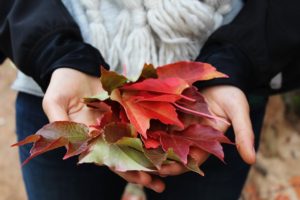 Yet on a further occasion, one morning while in intercession at Shekinah, we were wrapping up and many had left the room, when suddenly the Spirit overtook those who were still lingering. I labored in intercession on my hands and knees for a few moments when the Lord reminded me again, you are a tree. I then looked down at the necklace dangling from my neck and on the end of it were leaves; the Lord then reminded me of the tree of life in Revelation and He said to me, “The leaves are for the healing of the nations.”
Yet on a further occasion, one morning while in intercession at Shekinah, we were wrapping up and many had left the room, when suddenly the Spirit overtook those who were still lingering. I labored in intercession on my hands and knees for a few moments when the Lord reminded me again, you are a tree. I then looked down at the necklace dangling from my neck and on the end of it were leaves; the Lord then reminded me of the tree of life in Revelation and He said to me, “The leaves are for the healing of the nations.”
ALL of these whispers from God were very encouraging to me personally, but this past Saturday it all took on a whole new depth of meaning.
Saturday afternoon, Mary Audrey shared with us the story of when Apostle Barbara Yoder spoke at one of the very first meetings in Thamesville. Apostle Barbara gave a Word from the book of Job, which was literally placed on her Bible by an angel, written on a little slip of paper, as she walked back and forth praying in the Spirit, trying to grab hold of the revelation for the moment which seemed to be just out of reach. Apostle Barbara read;
“For there is hope for a tree, If it is cut down, that it will sprout again, And that its tender shoots will not cease. Though its root may grow old in the earth, And its stump may die in the ground, Yet at the scent of water it will bud And bring forth branches like a plant.” (Job 14:7-9, NKJV)
When you put ALL of these references to trees and leaves together, one must agree,
I THINK THE LORD IS TRYING TO TELL US SOMETHING!
Friends, all of us called to be at those meetings, are all trees and part of that one MIGHTY tree, the tree of life, together, sprouting and coming back to life out of the spiritual stump that unfortunately dried up many years ago, after the tree was cut down. Not only are our meetings in Thamesville providing the “scent of water” to the stump, we are all coming together in unity, growing into that amazing, tall, sturdy tree of revival and life that will oxygenate the atmosphere, bring forth fruit without fail and bring forth the leaves for the healing of those in the immediate area, in Ontario, in Canada and in the nations of the world. And remember, God has said, I will be behind the tree, I will be behind the power of the tree, the faithfulness of the tree and the strength of the tree, I will back the tree up and my presence will be among them.
This mighty tree that is coming back to life near Moraviantown, Ontario, is reminiscent of the original intent of the only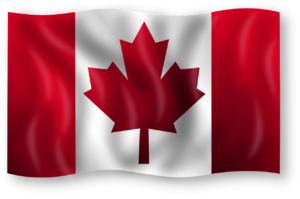 official Moravian settlement in Canada; a company of passionate ones, willing to follow the Lord’s lead, without agenda, without programs… Just burning hearts, passionate to see God revive our nation. As we are faithful, the Canadian Maple leaves will bud and break forth and Canada will walk in her destiny, being used by God to heal nations. Hallelujah!
official Moravian settlement in Canada; a company of passionate ones, willing to follow the Lord’s lead, without agenda, without programs… Just burning hearts, passionate to see God revive our nation. As we are faithful, the Canadian Maple leaves will bud and break forth and Canada will walk in her destiny, being used by God to heal nations. Hallelujah!
I hope you have enjoyed reading this article as much as I have enjoyed writing it. Interestingly enough, some of my ancestors are Pennsylvania German immigrants and were Moravian. My great grandparents, seven generations ago, were married in First Moravian Church, York, PA and their daughter and her husband made the journey from Pennsylvania to Essex County sometime between 1776 and 1788. My family did not settle in Fairfield, but they settled in Gosfield Township / Ruthven area. My redemption and lineage in God’s family is the most important, however, it’s still interesting.
Please feel free to send your comments and feedback. God bless you!
[1]Frederick Coyne Hamil, “Kentiana Fairfield, the First Moravian Village on the Thames,” accessed February 5, 2020, https://www.electriccanadian.com/history/ontario/kent2.htm.
[2]Frederick Coyne Hamil, “Kentiana Fairfield, the First Moravian Village on the Thames,” accessed February 5, 2020, https://www.electriccanadian.com/history/ontario/kent2.htm.
All information sourced from:
Hamil, Frederick Coyne, “Kentiana Fairfield, the First Moravian Village on the Thames,” accessed February 5, 2020, https://www.electriccanadian.com/history/ontario/kent2.htm.
